Learning how to build a pond the right way can be quite a challenge. Many would-be pond owners get discouraged by the lack of knowledge involved with purchasing the right parts and the steps involved. Since we believe that everyone deserves easy access to pond supplies, we've created the ultimate guide for building your very own pond.
Keep reading below for tips on how to build your first pond or water garden.
STEP 1: Choose The Best Location For Your Pond
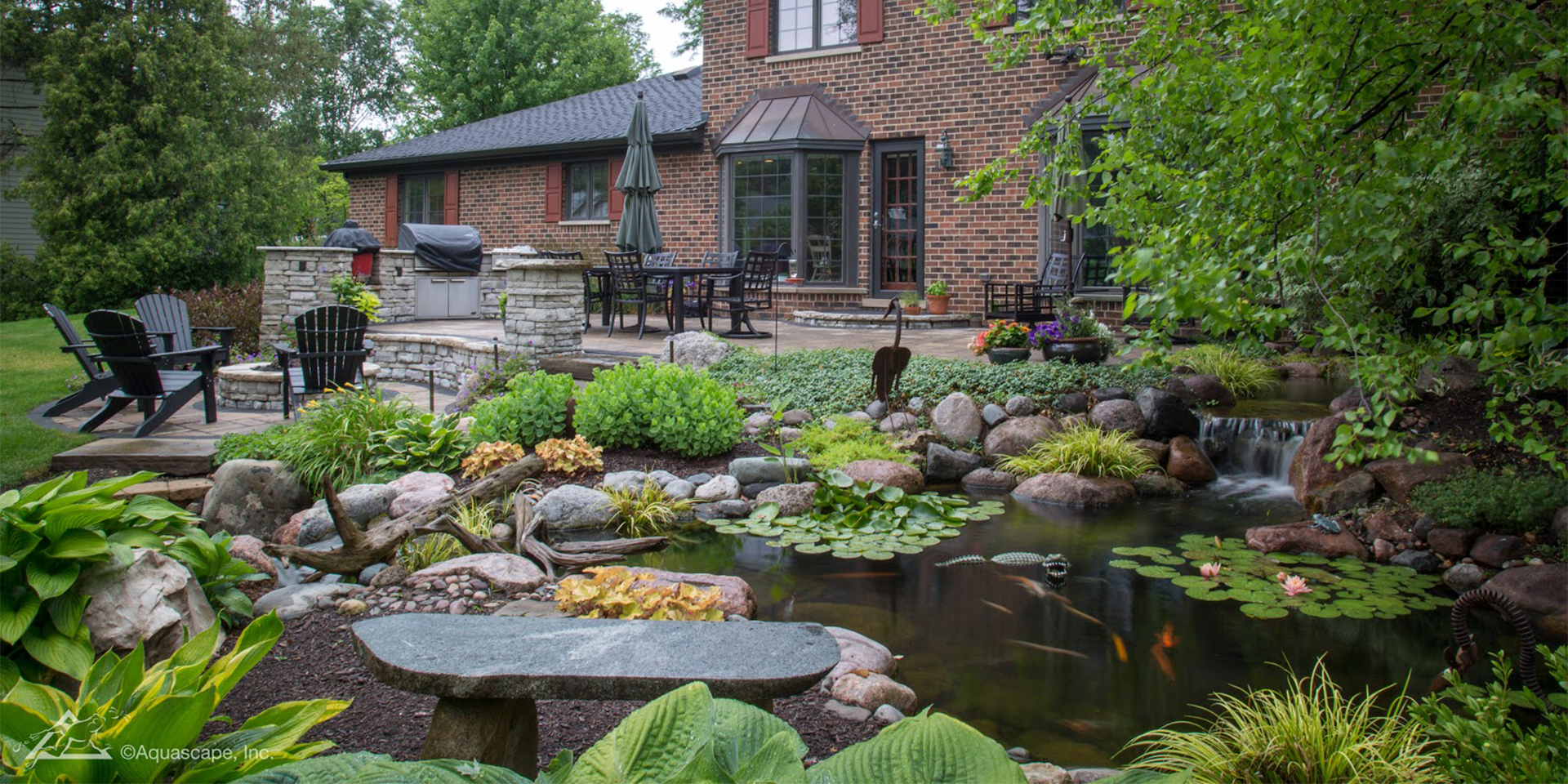
Where Will You Get The Most Enjoyment Out Of Your Pond?
The most important reason to own a pond is for the enjoyment it provides. A large part of that enjoyment is building a pond that looks good. Make sure you choose a location for your pond where it can be easily seen from your deck, patio, or windows.
You’ll also want to build your pond out in the open so it gets plenty of sunlight. This is important so your aquatic plants receive the proper amount of sun. Avoid building your pond under trees or close to bushes. They not only block sunlight but will drop organic matter into your pond which you don’t want.
Choose The Pond Shape You Want
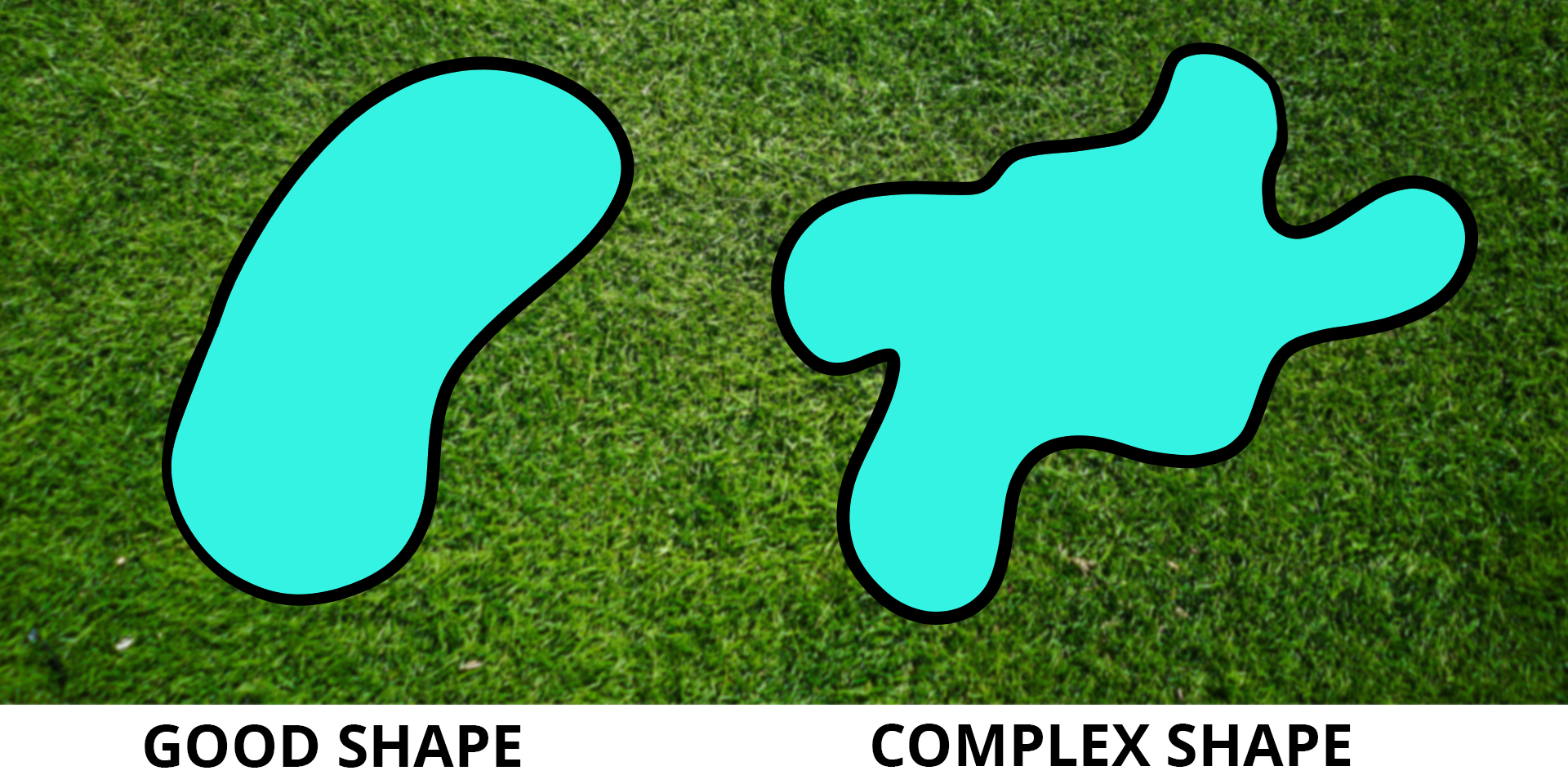
Visualize the pond in your backyard. How big is it? What does it look like? Will you have enough room for aquatic plants both inside and around your pond? Once you've answered these questions, it should be easier to figure out the shape of the pond the want.
Whatever you choose, try to keep it simple. Avoid any complex shapes with tight edges, because these will trap debris making your pond harder to clean. Some great shapes to consider are rectangles, ovals, pear shapes, and bean shapes.
How Deep Should Your Pond Be?
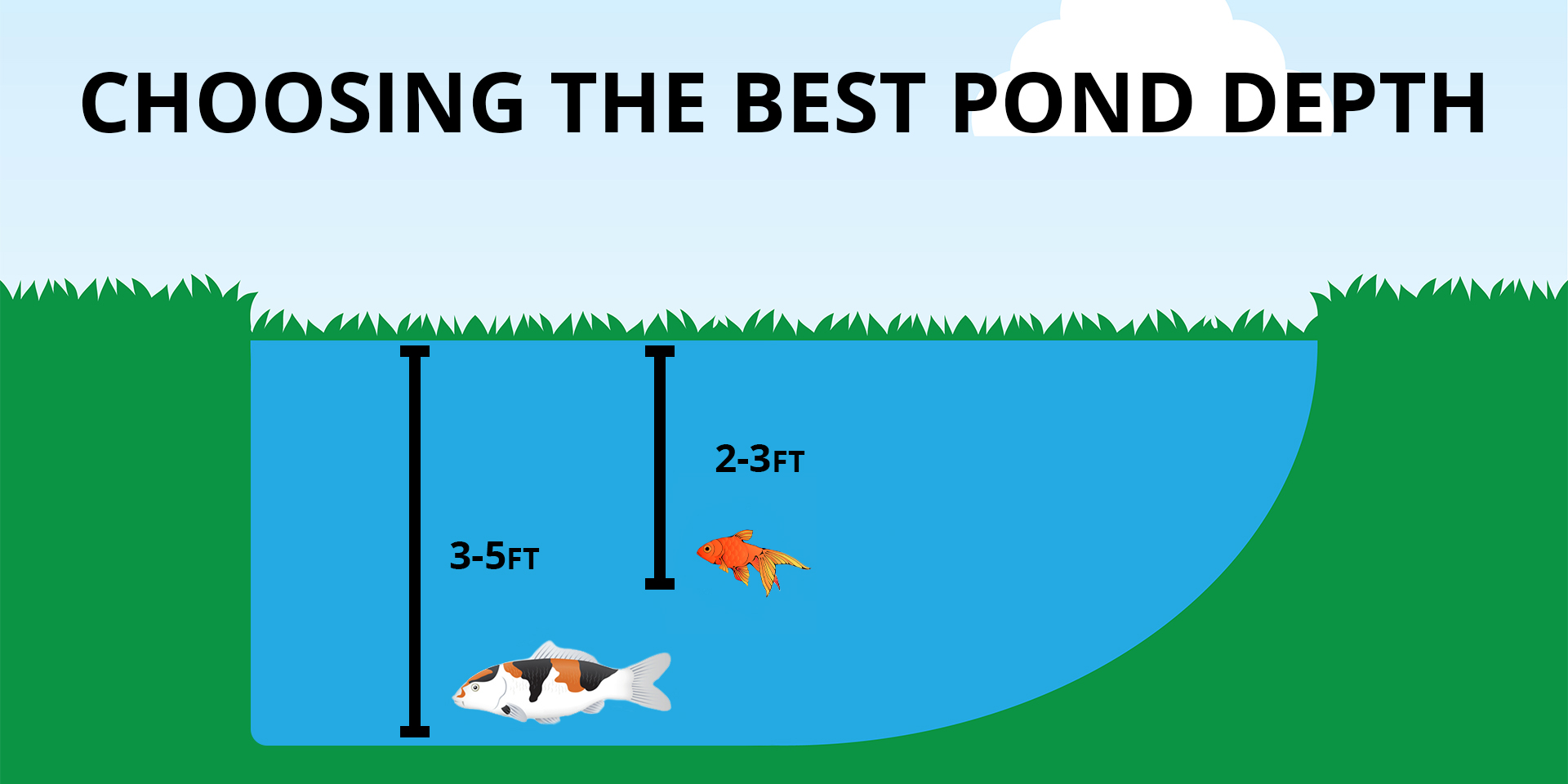
The depth and size of your pond will determine how many gallons it holds, and how many fish you can keep in it. If you live in colder climates, the deeper you go will also help prevent the water from completely freezing.
Water Garden vs Koi Pond
Deciding whether you want to build a water garden or koi pond will result in different needs for your pond. For example, water gardens don't require you to dig as deep as a koi pond.
Water Gardens
Water gardens are all about aquatic plants. They typically only need to be about 2 feet deep, since you won't be stocking it with koi. Many water garden owners still stock their pond with goldfish, because they don't grow as large as koi. Goldfish can thrive in ponds of 500 gallons or less. If you live in colder climates, it's recommended that you dig your pond a little deeper to about 3 feet.
Koi Ponds
Since koi love munching on plants, don't get your hopes up about having a water garden in your koi pond. You can still keep plenty of plants, but the coverage will be a lot less (around 50% plant coverage). Koi also get big, so it is recommended your pond be no less than 3 feet deep and more than 1,000 gallons in volume. Again, if you live in colder environments, consider digging your koi pond an extra foot or two deeper.
Call Your Local Utility Company
The last thing you want to do is start digging and puncture an underground pipe or wiring. Besides being extremely dangerous, this can also be very costly. Save yourself the headache and contact your local utility company to come and mark the locations of all underground pipes and wires. This should help you plan where the best location for your new pond is and where you will be digging for plumbing. If you hire contractors to do the excavation for you, make sure they are aware of everything as well.
Step 2: Purchase the parts for your pond

PARTS CHECKLIST
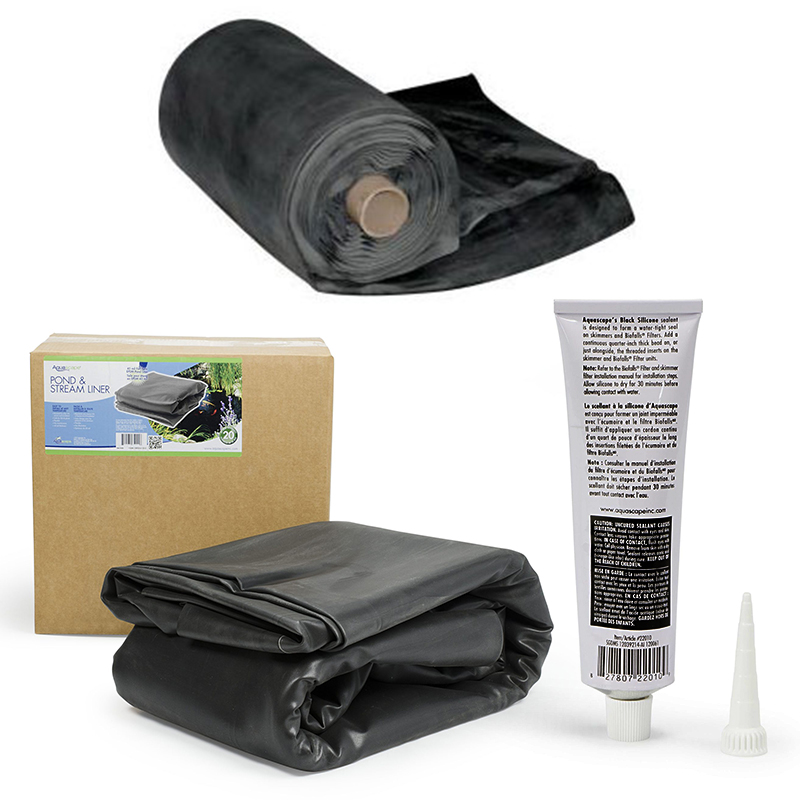

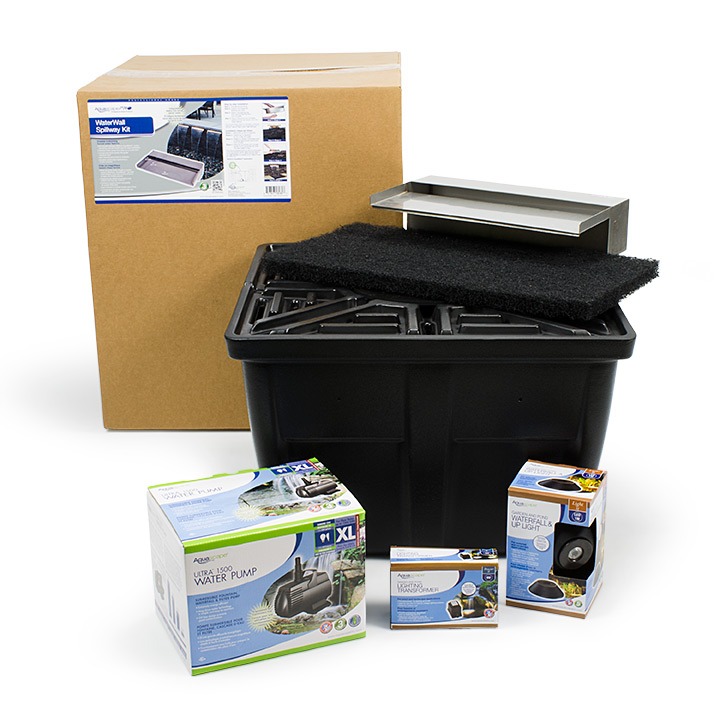
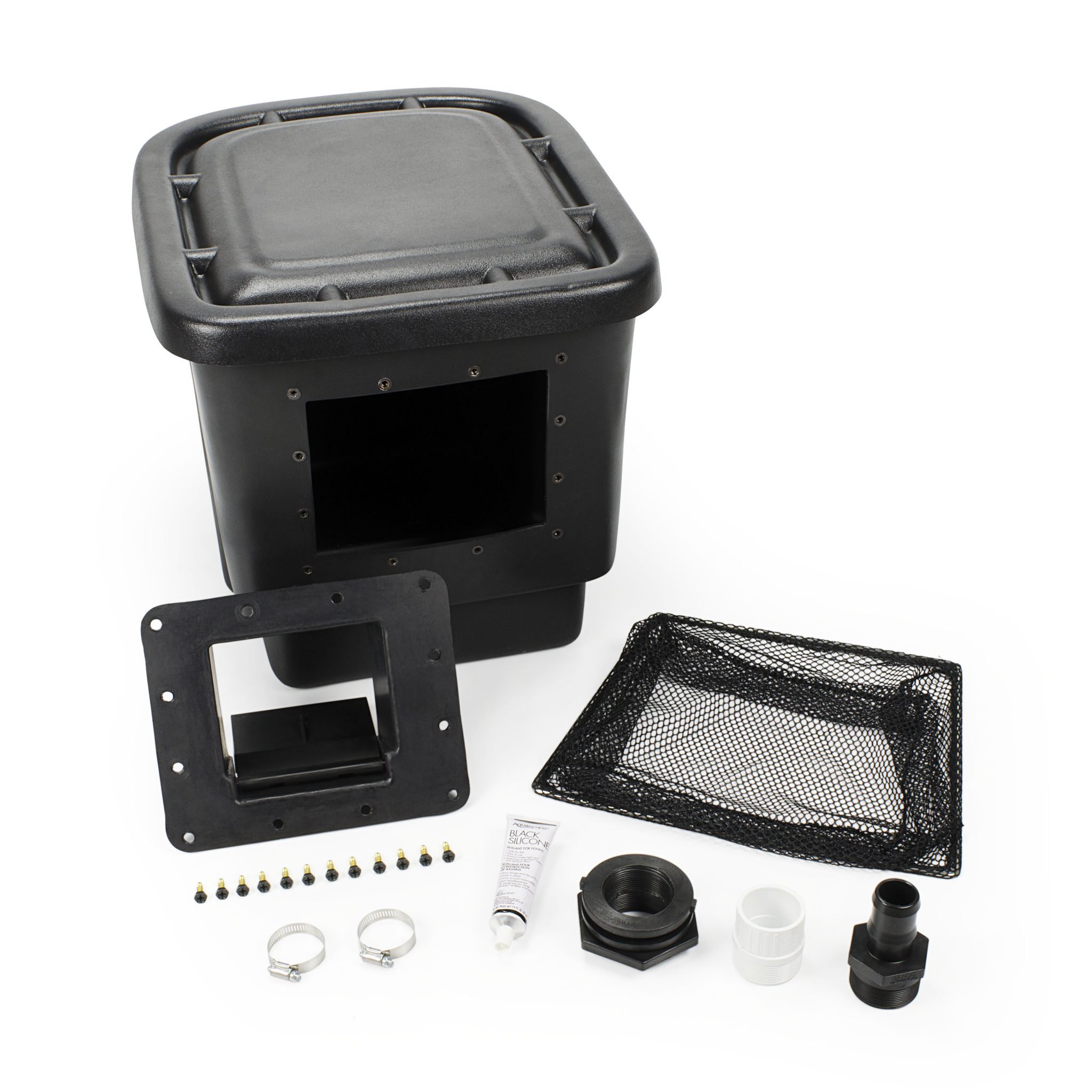
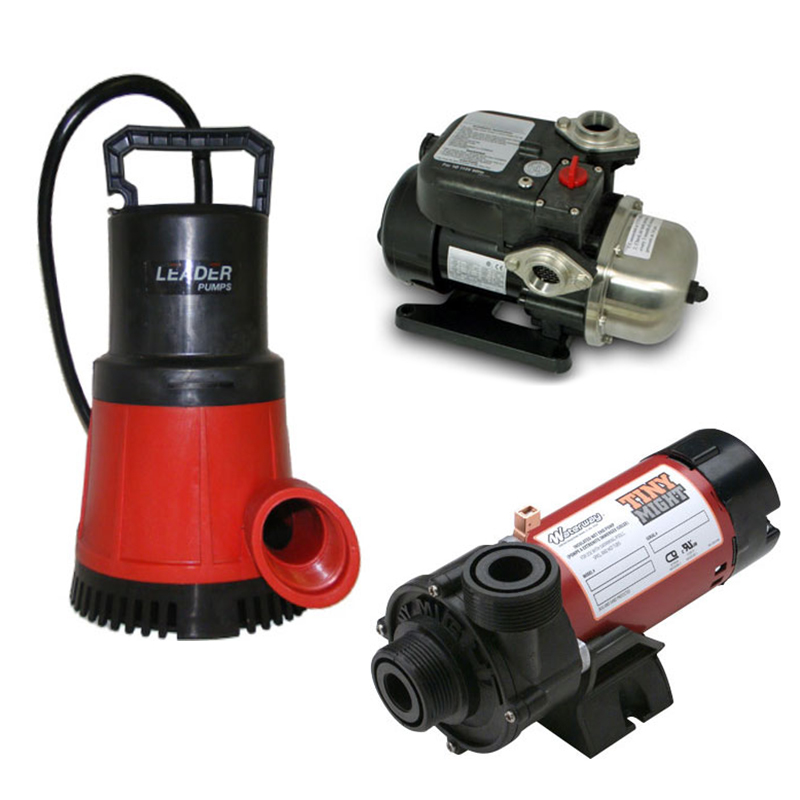
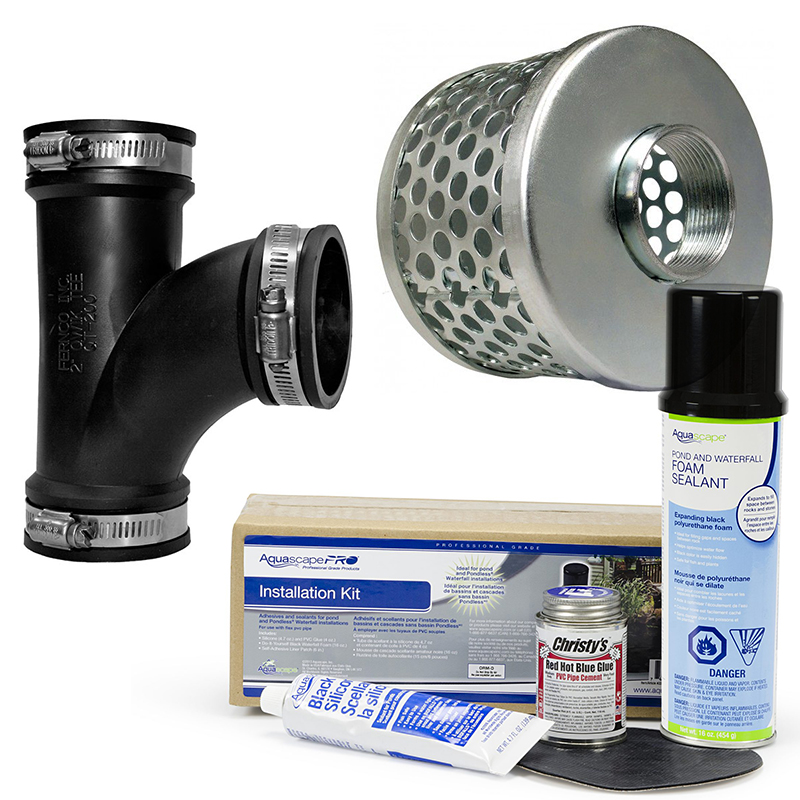
Pond Kits
The easiest way to build your first pond is with a pond kit. They come with everything you need to get started, including instructions. Just pick the size you would like and that's it.
You'll still need to provide your own tools and install everything yourself. However, they offer peace of mind that everything you buy in the kit is guaranteed to work together without hunting down compatible parts. If you feel like a pond kit is a perfect solution for you, then skip ahead to Planning the Layout of Your Pond.
However, if you're the adventurous, do-it-yourselfer type who enjoys complete customization, then keep reading below where I explain what essentials you'll need for your pond and how they work.
Pond Liner
Decide if you want a preformed, hard plastic pond liner or a roll of EPDM liner. Hard plastic liners give less flexibility to the look of your pond since they are performed and you can only choose from what is available. On top of that, most preformed liners only hold a couple of hundred gallons of water. That might be fine for a water garden, but should generally be avoided for most fish ponds.
EPDM liners are bought in rolls of various sizes and are commonly used in the construction of most ponds. In order to figure out much much pond liner I need, I like to use this simple formula:
Maximum length + (2 x depth) +2 x 0.15m overlap = Total Length of Liner
Maximum width + (2 x depth) + 2 x 0.15m overlap = Total Width of Liner
Make sure to also pick up pond underliners as well. These sit between the pond liner and the ground to prevent anything sharp from puncturing the liner. A punctured liner can leak out overnight if you're not careful.
Pond Skimmer
A pond skimmer functions in just about the same way as a pool skimmer by filtering debris out of the water. Most pond skimmers are large enough to house a submersible water pump and filter media.
When choosing a skimmer, I recommend choosing a skimmer that is rated to handle a flow of water similar to your pump's flow rate.
Filter Media
Pond filter media comes in two types, mechanical and biological. Some pond owners prefer one over the other, and some pond owners use both. Each one filters out your pond differently.
Mechanical
Mechanical filters trap bits and pieces of debris from your pond. Mechanical filter media is installed in your skimmer and collects junk before it can pass into your water pump. Mechanical filters need to be cleaned regularly and replaced once you can no longer completely clean them out. By collecting organic debris, mechanical filters prevent them from breaking down in your pond.
Bio
Bio filters are made to house beneficial bacteria that feed on harmful chemicals and algae in your pond. Bio filters work best when they are placed after mechanical filters, since the mechanical media will capture most of the large particles in the water. You can buy a dedicated bio filtration unit, or just add bio-media to your waterfall spillway for a cheaper alternative.
If you also use a UV clarifier to clear up algae, make sure you install the bio filters after your clarifier. The UV light will kill the beneficial bacteria otherwise, rendering them less effective. Bio filters will help clean up the algae that makes it through the clarifier alive.
Pond Pump
Pond pumps carry the flow of water in your pond. They suck water in through the skimmer and push it out through the waterfall. Pond pumps come in two different types, external and submersible.
Submersible
Submersible pond pumps are submerged directly in the water to do all of their work. Because they are smaller in size than external pumps, they are usually placed directly in the skimmer. Submersible pumps are very convenient, and the best choice to use in your first pond.
External
External pumps sit outside your pond, usually in a housing to keep it safe from damage. External pumps are traditionally more cost-effective to run than submersibles, but with modern advances in pump technology, that isn't always the case anymore. If you want a large pond, get an external pump. They have the horsepower handle a much higher GPH than submersibles and do it a lot more efficiently. I recommend an external pump for ponds over 2,000 gallons.
UV Clarifier
A UV clarifier is used to keep the water crystal clear by killing algae. Each unit houses a UV bulb that emits powerful ultraviolet light. Algae is pushed into one end by your pond pump, where it is exposed to ultraviolet radiation. Since algae is a single-celled organism, this ultraviolet light is strong enough to kill it instantly. The water now housing dead algae is pushed out the other end and continues on to the bio filter, where the beneficial bacteria feasts on any remaining algae that weren't fried.
Waterfall Filter
Your pond's waterfall filter, also known as the waterfall spillway, is the final stop in your pond's water filtration cycle. A waterfall is what many pond owners find most enjoyable about their pond. Waterfall filters have a large reservoir that holds plenty of bio filter media for extra water filtration.
Most spillways come in varying widths that provide different levels of water flow. Whatever waterfall feature you choose, double-check that you get a pump that can keep up with the recommended gallons per hour (GPH) that your falls need.
Plumbing
The pond plumbing is what connects everything together in your pond's water cycle. Plumbing comes in a few different types of materials, but when buying plumbing supplies, the most important things to consider are the diameter and flow rate.
Each tubing has a maximum flow rate in gallons per hour (GPH). If your pump pushes a higher GPH than your tubing can handle, it will cause your pump to fail from all of the extra backpressure.
Here is a quick table on the maximum flow rates we recommend for your plumbing diameter:
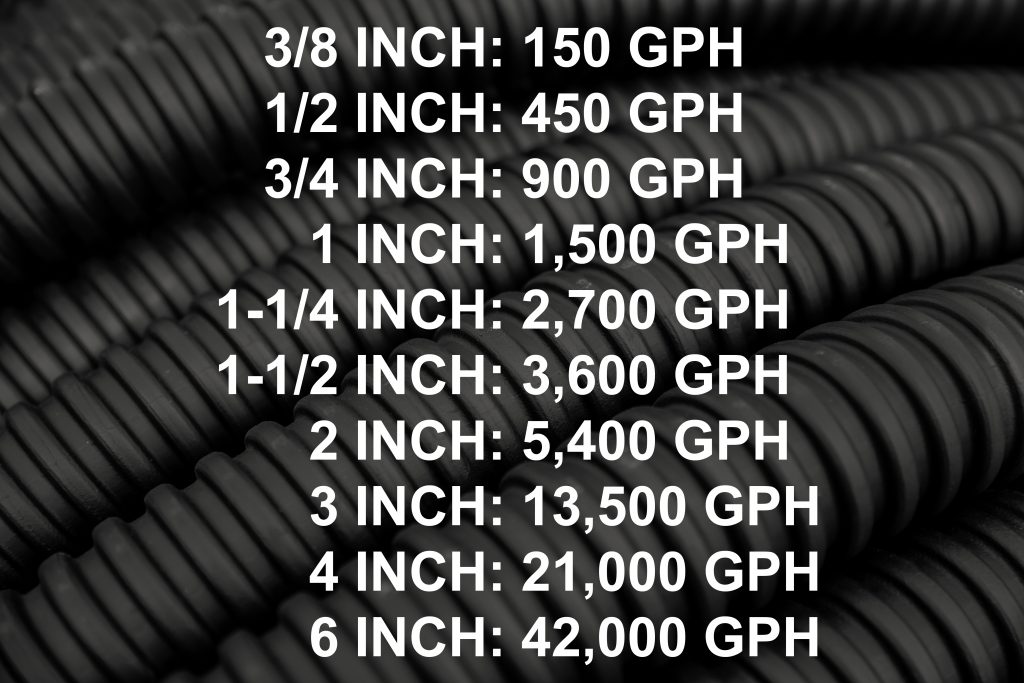
Step 3: plan your pond's layout
Ensure The Ground Is Level
Before you do any real excavation, you need to make sure the ground where you will be building your pond is nice and level. If the ground is uneven, water will naturally leak out of the low end. Take time to level and landscape the part of your yard where you are building the pond.
Mark The Edges Of Your Pond
Now you have to mark out the edges to your pond. I advise against making irregular shapes. Stick to oval or bean shapes. Sharp angles from an abnormal shape trap debris and makes it almost impossible to keep properly clean.
Start with a measuring tape to mark how long and wide it will be. Then, lay down a garden hose as a guide for the edges of your pond. Finally, mark the ground under the garden hose with marking paint. This will be your guide for when you start digging later.
Plan Where The Plumbing Will Go
You want to place the waterfall in an easy to view spot since it will be the most attractive part of the pond. Plan in advance how big you want your stream to be. I like to place my waterfall a couple of feet away from the edge of the pond so I can build a nice cascading stream over rocks. If you don’t want a stream, just place your waterfall closer to the edge of the pond.
Place the skimmer on the opposite side of the pond from your waterfall. This provides the best water flow since water travels from one end to the other.
After you place down the waterfall and skimmer, layout the plumbing around the edges of your pond. Leave some slack in the line for when you bury it later. Make sure you mark with paint where your waterfall and skimmer will go before you start digging.
Setup The Waterfall Filter
I recommend you hook everything up to the back of your waterfall filter now, so you won’t have to dig up the berm later. Just bury your plumbing with the extra dirt during excavation. To attach your plumbing to the waterfall filter, tighten it by hand, and then use a channel lock to secure in place.
Install Your Skimmer
Dig out the ground that you marked earlier for your skimmer. The skimmer should be leveled and placed so that the water level is just below the top of the opening. Use a laser level or string level to help you determine the water level you want in your pond. Tamp the ground under the skimmer and use a level to make sure it sits evenly on all sides.
Step 5: Assemble Your Pont Parts
Install The Pond Liner
Before you install the liner, you want to make sure the ground is tamped flat and free of roots and rocks. Then, you’ll want to install your underlayment. This is important because it protects your EPDM liner from getting punctured.
Drape the underlayment over all the surfaces in your pond, making sure it contours the shelves and has enough overlay. Once the underlayment is installed, repeat the process with your pond liner. Make sure you smooth out your liner to get rid of creases and wrinkles that can trap dirt. Start in the center and work your way out.
Once you finish smoothing out the liner, cut out the opening for your skimmer faceplate and use some silicone and the included hardware to seal it in place. Now your pond liner is in place, your skimmer is set up and watertight, and you are ready to start rocking out your pond.
Rocking
After the liner is properly installed, it’s time to start placing rocks in your pond. Start from the bottom and work your way up. Place the large rocks first against the vertical sides of your ledges and smaller pebbles in the crevices and horizontal surfaces of the pond. Be sure to rock over all of the exposed liner for a natural look.
After you finish rocking over your liner, it’s time to rock around your waterfall. This is where your creativity comes into play. If you are adding a stream from the waterfall to your pond, start by digging that out first, and then lay down some extra liner along the stream to prevent water from leaking everywhere, making sure it overlaps the pond liner. Attach the liner to your waterfall faceplate according to the manufacturer’s instructions. Now, you’re ready to rock your falls.
The key to rocking out your waterfall filter is to try and make it look as natural as possible. Get creative with your build, but be careful when stacking rocks to keep everything steady. Use larger rocks around the sides of your stream and cover any exposed liner with smaller rocks. Backfill or remove dirt from your mound as needed to keep your large rocks steady.
When you’ve finished placing your large rocks around your waterfall filter, apply pond foam in between all the rock cracks and crevices. This prevents water from leaking everywhere. Cover up the foam with some pebbles and rock dust so it will look natural when it dries. Place a flat rock, like slate, evenly across the lip of your waterfall to help disguise it. Cover the top with another flat rock and you’re done disguising your spillway.
Pump
Now it’s time to hook up your pump. If you purchased a submersible pump, attach it to the plumbing assembly according to the manufacturer’s instructions. Lower it into the skimmer and connect it to your trenched plumbing line.
Filter Media
Add the mechanical filter mats to your skimmer now. Don’t add any bio media to your bio filter yet, since the bacteria need water to survive. Add that into your waterfall filter after you have filled your pond with water.
If you decided to pick up a UV clarifier, then attach that to your plumbing line after your mechanical filter but before your bio filter.
Step 6: Decorate your Pond
Now is the really fun part. It’s time to decorate your pond. This is where you get to let your creativity flow and decide what truly makes your pond your own!
Install Underwater Lighting Now
Before you fill up your pond with water, now is the perfect time to install underwater lighting. This is because you can hide your lighting fixtures amongst the crevices in the rocks. By hiding them, the lighting blends in beautifully with the rest of your pond.
Place the underwater lighting so it faces away from the main viewing angle. Also, don’t place them too low in the pond to make maintenance easier.
CRITICAL STEP: Let Your Pond Cycle
Before you move on with the rest of your decorations, it’s time to fill up your pond with water. I like to start by rinsing off the rocks to wash away excess dirt and debris. Be sure to pump the dirty water away somewhere in your yard. This step helps speed up the cycling process of your pond.
When you build your first pond, the water needs time to reach a healthy balance. Start by adding beneficial bacteria and water treatments to your pond. Then, start up your pond and let your filters get to work on clearing up the water. Buy some testing kits to get an accurate reading on the water quality, and make adjustments as necessary.
Usually, in about 3 – 4 weeks, your new pond should be ready to go. The water will be clear, and all the levels will be healthy enough for fish to live in. Koi love water that is a little alkaline. A pH around 7.5 is perfect, but anything between 7.2 and 7.8 is great.
Add Aquatic Plants
Now it’s time to add aquatic plants to your new pond. Plants not only look nice, but they help promote a healthy natural ecosystem in your pond. Plants feed on excess waste in the water, so they can offset some of the load on your filters. They also absorb plenty of sunlight that algae feed on, so plants are great at reducing algae blooms. Good plant coverage in a pond should cover somewhere around 50% of the water’s surface.
Some popular floating plants are Water Lilies, Water Hyacinth, Water Lettuce, Water Poppy, and Lotus. For submersible plants, some common choices are Fanwort, Red Ludwigia, and American Waterweed. For the edge of your pond in the shallow water, try planting Umbrella Plants, Water Iris, or Horsetail.
Add Your Fish
This is what you’ve been waiting for. The whole reason you built your first pond was so you could have your own fish to care for and show off. As I said before, the kind of fish you stock is determined by the size of your pond. I recommend a pond larger than 1,200 gallons if you want to keep koi. Goldfish don’t grow as large and will live just fine in smaller ponds.
When adding fish to your pond, strat with a quarantine. This lets you keep an eye on your fish to make sure none are diseased. Keep them in their own containers and gradually add water from your pond to get them acclimated to the water. Quarantine should take about 2 weeks.
Don’t add all of your fish at the same time. This can make it hard for your filters to keep up. I recommend no more than 5 or 6 at a time. The best to do this is to bag your fish and let them float in the pond for about 15 minutes. This lets them get adjusted to the water temperature without introducing a sudden shock. Dump half the water out and fill with half pond water, and then wait another 15 minutes.
Your fish should now be ready to enjoy their new home. Take this time to kick back and admire a job well done. Backyard fish ponds are beautiful to look at and a relaxing hobby that will provide enjoyment for years to come.
Now that you’ve built your first pond, there’s still a wealth of information out there for any pond enthusiast. Be sure to check out our knowledge base for more helpful tips and information on caring for your pond year-round.
Common Questions
How Long Will Building A Fish Pond Take?
The bigger the fish pond, the longer it will take to build. However, for your average size pond, it usually takes a weekend to finish. If you are doing it all yourself, then give yourself a few days to get it done. If you have a group helping you, then it can get finished in a single day. The longest part is usually the excavation.
Where Should I Build My Fish Pond?
You can build your fish pond in either your front yard or your backyard. It’s all up to you.
I would recommend installing your pond somewhere you can see it easily. Enjoy the view from your bedroom window, from your porch or patio, or wherever else you would like to show it off to your friends and family. Owning a fish pond is a hobby and it’s all about the enjoyment you get from admiring the beauty and caring for your fish.
One thing to keep in mind is that you should not build your fish pond under trees or around bushes. The falling leaves can land in your pond and lead to excess organic waste. You want to avoid this, because organic waste will break down into harmful chemicals, like nitrites, that are not safe for your fish.
How Much Space Will I Need To Build A Pond?
If you’re building a Koi pond then I recommend making it no smaller than 1,200 gallons. That’s roughly a 7′ x 8′ x 3′ pond (which works with a 180 sq ft liner). If you only want a water garden, then feel free to go as small as you’d like.
I usually see people build their ponds around 1,500 gallons. Keep in mind, the larger the pond, the more work, and money involved. If this is your first pond, I recommend keeping it small.
How Much Will It Cost To Build A Pond?
This all depends on a few things. One, how big do you want to build your pond? Two, are you buying a pre-build kit, or are you getting all the parts yourself? Three, how many fish And plants do you want to keep in your pond?
Smaller ponds will always cost less to build and be more cost-effective to maintain. You can buy an Aquascape pond kit that comes with everything you need to build your pond for a reasonable price. I usually recommend pond kits to anyone who is a novice to pond building since they are so convenient and affordable.
Can I Do Everything Myself?
Absolutely you can do everything yourself! It just might take a little more time. If you would like to speed up the process you can always hire a local contracting crew to help you get the job done.
Just remember to make sure you call your local utility companies before you start digging. The last thing you want is to damage any wires or plumbing in your yard.
